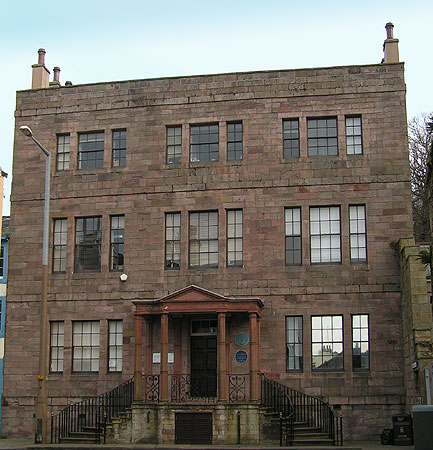

Catherine Street dates back to about 1750 but it is uncertain who the eponymous Catherine was. Architecturally it begins in promising style with Somerset House at the end of Duke Street which looks down Catherine Street. This fine mansion was built in 1750 by Samuel Martin who made his fortune trading with America for tobacco. The classical portico may have been added at a later date.
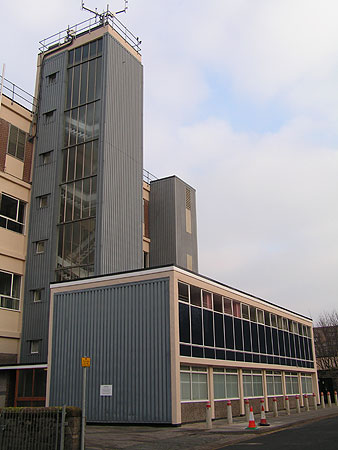
Next however is the telephone exchange which is a totally modern building in typical style for the 1960's made of glass, concrete and corrugated metal - not in anyway complementary to the Georgian architecture of Whitehaven. Since it has recently been repainted it does stand well on its own as a piece of modernism. It has straight clean lines with well ordered divisions. It is also a design based on function, the high tower providing a suitable platform for wireless antenna in addition to providing a fire safe stairway linking the floors.
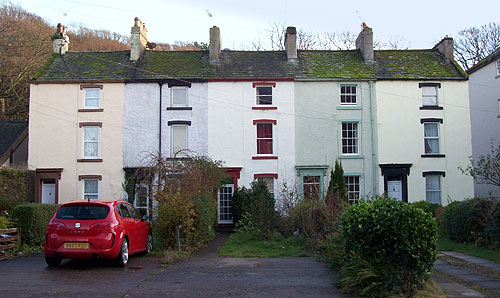
Opposite the exchange we have the first houses on Catherine Street which are built on area known at the beginning of the 19th century as Solomon's Temple. This is a grand name but by the time a report on the state of health in Whitehaven was published it was described as:-
"...a ruiness pile of building let off into room tenements; there is a confined yard behind covered with human refuse, pigs are kept in such cellars as are not occupied as tenements, and for years the attics were made receptacle for all the ashes of the place and the refuse from the children ...".
Today there is a quite attractive small terrace, with gardens and off street parking and rear views over the park.
In front of the Temple was an area known as Martin's Court presumably with regard to Samuel Martin who had built Somerset House at the top of the street.
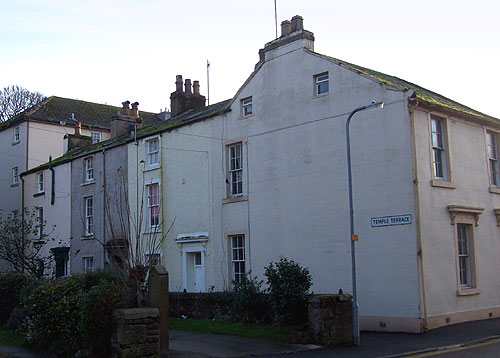
At right angles to Catherine Street is a short row of houses named Temple Terrace the end on of which faces the main street. The narrow lane in front of these was once known as Temple Lane and led to Solomon's Temple.
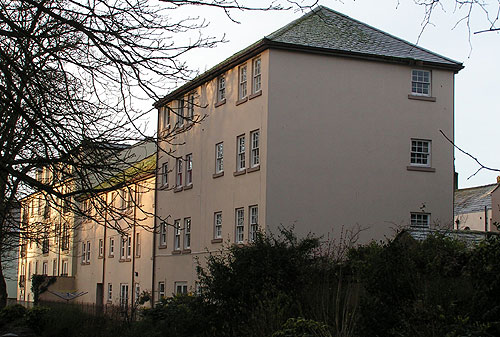
Behind them are apartments called Temple Court and these have views over the Castle Park.
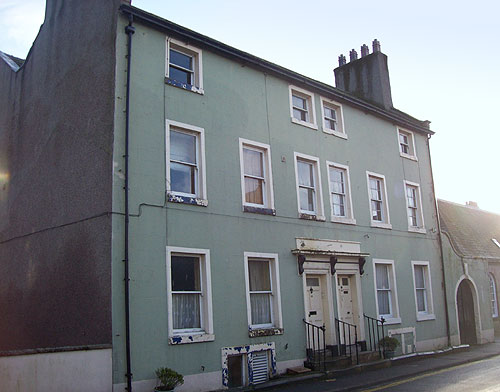
Next on Catherine Street is a fine pair of Georgian houses that are symmetrical with their doors in the centre. The archway at the side presumably provided access to a stable and possibly a carriage.
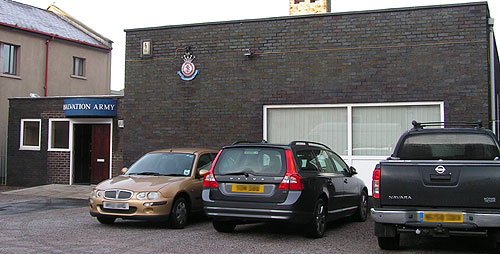
Across the road the Salvation Army citadel was built in 1971 to replace an old 1000 seat Wesleyan chapel that had been built in 1836 but used by the Salvation Army for most of the 20th century. Previously on this site, when Whitehaven had a great trade with the West Indies, there was a large Sugar House here which extended along Catherine Street to where the telephone exchange is.
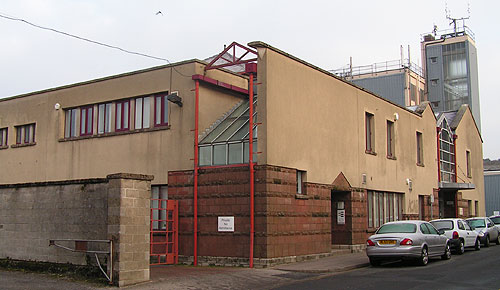
Back to back with the Scotch Street police station is the Whitehaven Magistrate Court built in 1987. Shabby concrete walls are cut into with fine dressed sandstone interspersed with odd windows and doorways. A partly flat roof, but also pitched roofs providing gable ends facing the street and a strange greenhouse cut into the other end surmounted by a red girder flanked by red downspouts. It appears to be a modern building that has thrown a nod to classism and diminished itself in the process - unlikely to provide its more unfortunate visitors any respect for society other than by the sentences meted out.
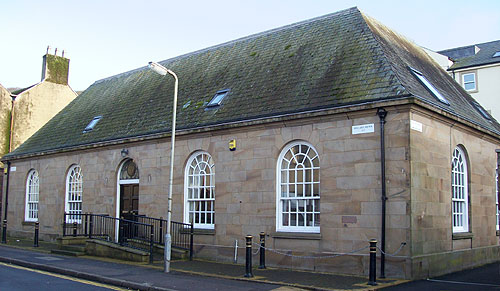
This building that was for many years the Job Centre was built, according to detail in the fan light, in the reign of George VI in 1937 but it has now been converted into accommodation and renamed Hillary Mews.
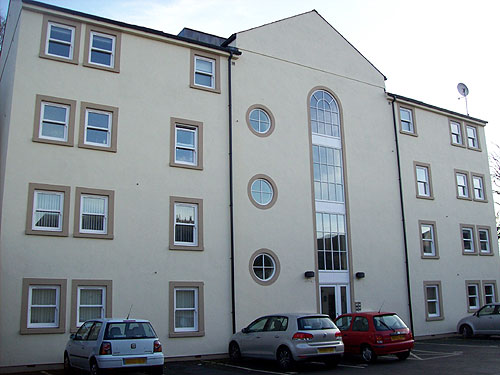
Behind Hilary Mews are 12 new apartments called Hillary Court. This fine new building with car parking on the Catherine Street side and overlooking the Castle Park at the front is a great example of how a modern design can integrated into a Georgian town.
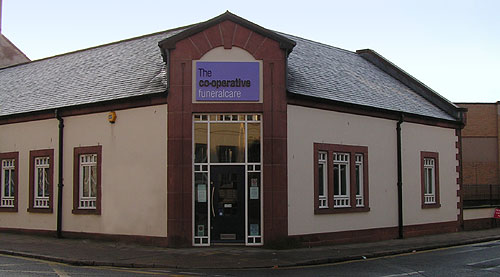
Crossing Lowther Street we reach the Coop Funeral directors, one of the newest buildings, but one which borrows several ideas from Whitehaven's architectural heritage, using local materials, such as red sandstone quoins and window surrounds, and has a slate roof to produce a building that looks as though it might always have been there. Previously the site was used by a petrol filling station.
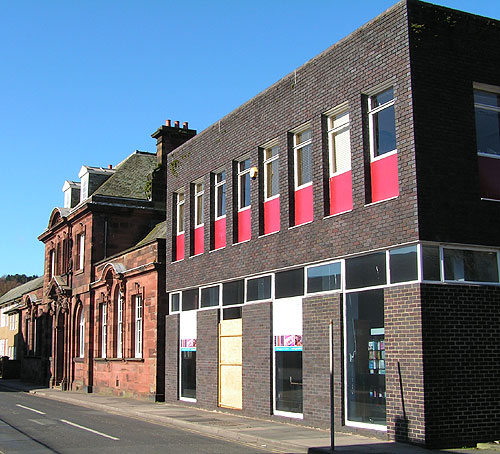
Another building in the modern style is the Daniel Hay Library which opened at the beginning of 1970 and covers the site where once was The Whitehaven Museum. The Subscription Library had been moved from Queen Street to a new building on this site created by the Earl of Lonsdale in 1808. By 1861 it was said to have over 10,000 volumes. Between 1921 and 1957 the building housed the town's Museum and was demolished in 1961. The museum was re-housed in the market Hall in 1974 but until then items in the collection were stored in the library. The modern building faces Lowther street where it joins with the equally modern Civic Hall, however on Catherine Street it combines with the old Victorian library and this was obviously going to be a marriage of opposites. Daniel Hay was a former librarian who was a brilliant local historian and his book "Whitehaven An Illustrated History" laid the foundation for all the books that followed about this town's fascinating past.
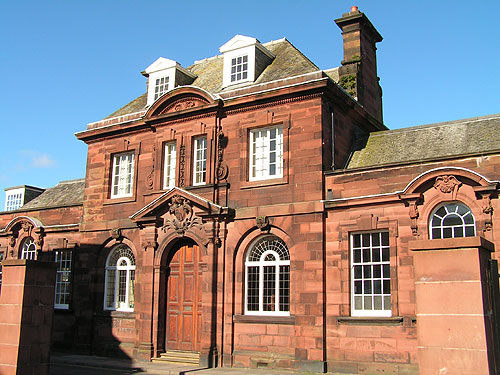
The old part of the library opened in 1906 has lots of classical elements and is made of local red sandstone with great attention paid to symmetry using alternate arched and rectangular windows. The building was part financed by the great philanthropist Andrew Carnegie. Previously the library had been on Queen Street.
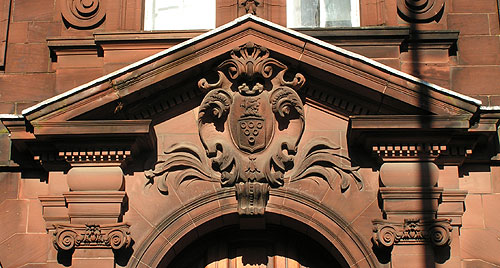
The large classical doorway with straight ionic style pilasters is topped with a palladian pediment enclosing a florid heraldic device beautifully carved and containing the old Whitehaven shield taken from the Lowther coat of arms. At the beginning of the 19th century this is as far as Catherine Street went. Beyond the library was the Earl of Lonsdale's Granary and beyond that his meadows.
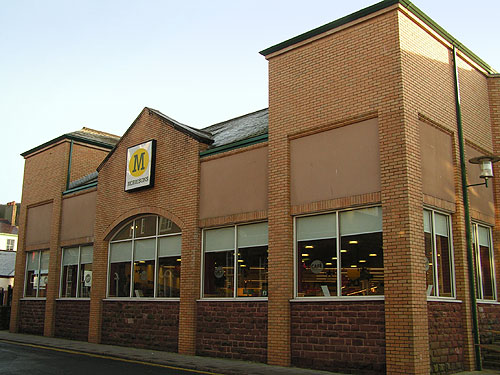
Opposite the old library is Morrisons superstore, previously Safeways superstore, on the site of what was Richmond School. With red sandstone used in the lower wall and a slate roof some attempt had been made to integrate the facade with the town but the overriding function of the building to provide modern easy shopping facilities dominates the design. It is in stark contrast to the Richmond School building the facade of which was so grand it was kept after demolition and transported to Ireland.
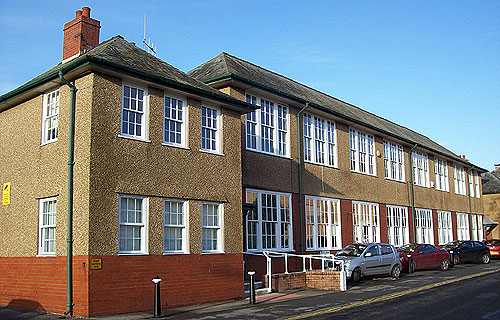
The next building provides offices for various Cumbria County Council departments but was once part of Richmond Secondary School. It was known as The Annex, for the rest of the school, done in a similar style to the old library, was across the road where Morrison's superstore is now situated.
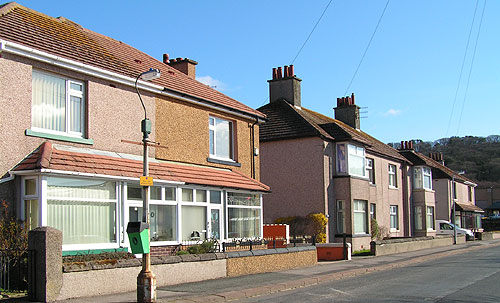
Catherine Street also has this group of semi detached houses which once looked over the playing fields of Richmond school to the cricket ground beyond but now have a view of a municipal car park. They are similar to those outside the town centre built either side of the Second World War.
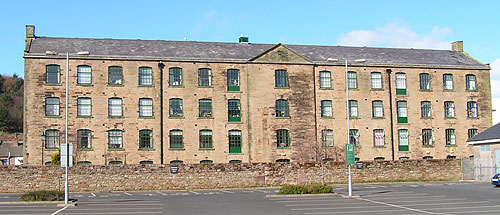
Catherine Mill is now a series of apartments run by Two Castles Housing but it has had various jobs in the past. It is also known as Barracks Mill as the local militia were for a time stationed here and hence the small road that leads to Irish Street passes under Barracks arch. It was from this road that the mill was accessed because when it was built Catherine Street did not reach this far. All the land around was in fact part of the Castle meadows.
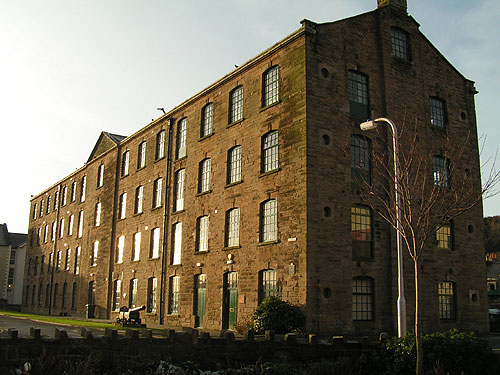
Catherine Mill was originally built around 1809 as a flax mill for sail cloth manufacturer Joseph Bell and Company. Joseph Bell's father Daniel was a Quaker from Hawkeshead and started a flax business in Lancaster. Unfortunately he died whilst Joseph was still an infant but his mother kept the business going until he was old enough to take over. Joseph left Lancaster and came to Whitehaven and opened a mill in Scotch Street, with the Hornby brothers from Kirkham, producing sailcloth. They were later joined by Henry Birley and expanded the business to Low Mill at Egremont. By the time he started building Catherine Mill, Birley and Co. had a warehouse on Duke Street and Joseph had found another partner, John Bragg, who was a flax and hemp importer and also a Quaker. Joseph Bell died in 1823 leaving the mill to his three sons and the flax business continued until 1853. John Pattinson took over the mill in 1885 but in 1907 built the even larger Beacon Mills on the north side of the harbour. In the 1920's the mill was a Carpet factory and for a while it was also a warehouse for Dobson and Musgrave.
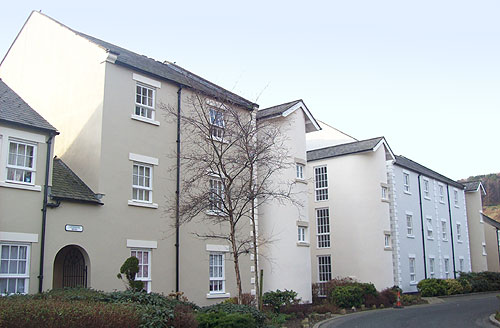
Around the side of Barracks Mill some new apartments have been built in a development known as Catherine Mews. These have used many elements of Georgian architecture to provide a very satisfying feeling of belonging to the town.
The bottom end of Catherine Street leads onto Mill Street behind the mill and Richmond Terrace which leads to the Cricket Ground and finally turns into Howgill Street which connects with Irish Street.
© WAWL 2009